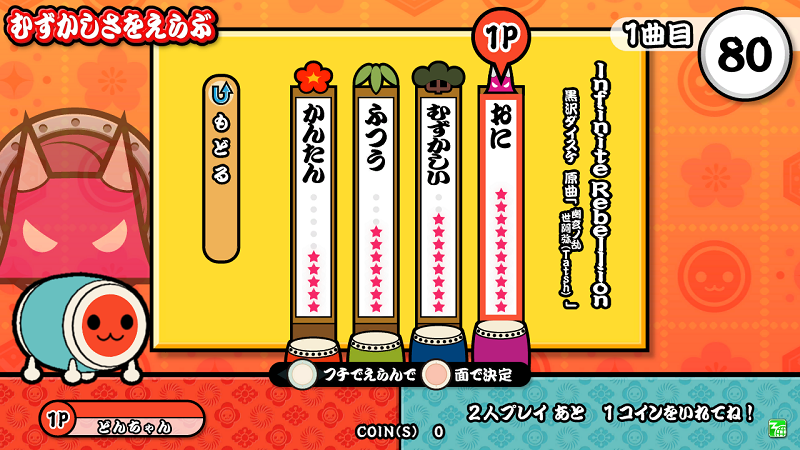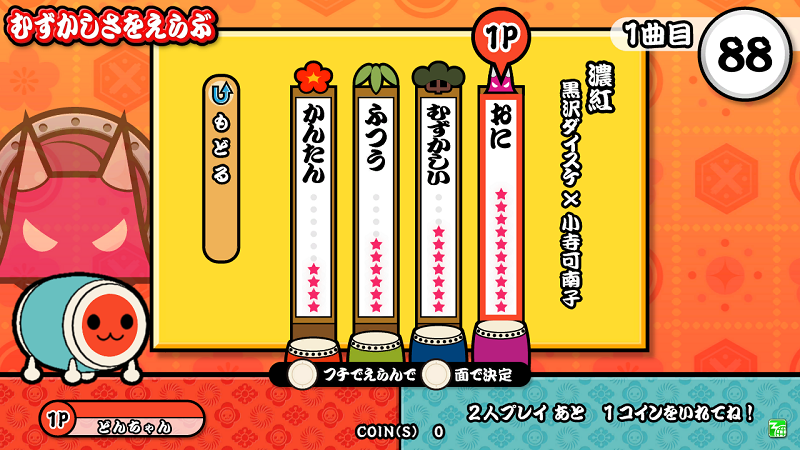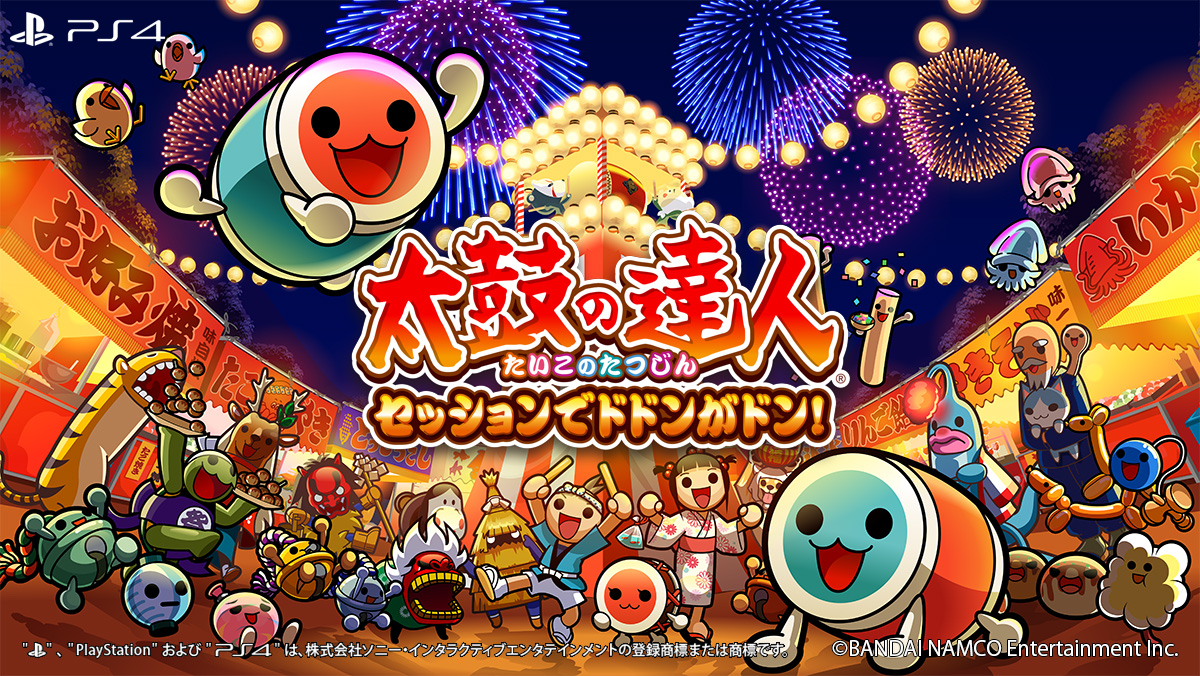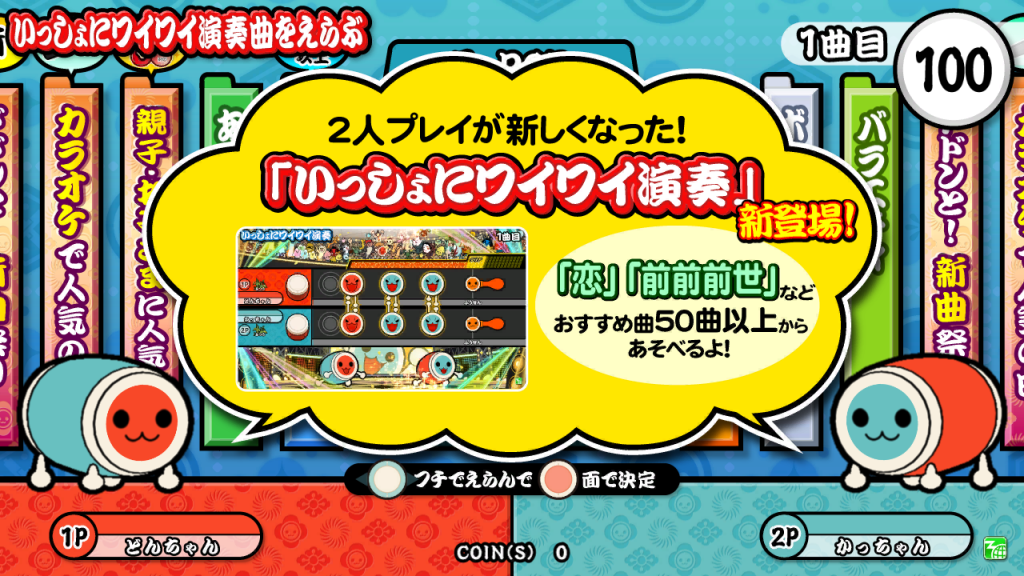Building up from our previous
two-
parter feature, we take a look back to Shinto Culture as it's being told by the continuation of the Namco Original-based God Collection series.
As this peculiar song trope is branching out to Western religions, we might or might not be having a look at those outlets, too!
8OROCHI
REDALiCE's Namco Original debut has been marked by a number-punny song whose title refers to the
Yamata no Orochi (八岐の大蛇), a savage and legendary Japanese dragon with eight heads and eight tails. In ancient Shinto myths, it's often described as a red-eyed creature with firs and cypresses growing on its back.
The mythological creature is tied in with one of the many tales surrounding the sea deity
Susanoo-no-Mikoto (須佐之男), during his exile years on Earth. Upon reaching the Izumo Province's Hi River, the banished deity encountered two weeping Kunitsukami (國神, 'Earthly Deities'), saddened by the Yamata no Orochi's cruel impositions, forcing the couple to give one of their 8 daughters in sacrifice every 7 years. Susanoo met the two Kunitsukami shortly before their preparations to offer their last daughter,
Kushinada-hime (櫛名田比売), and offered to go in her place to slay the vicious beast. After turning Kushinada into a comb, Susanoo disguised himself as a girl, offering an eight-fold sake liquor to make it drunk; once the Orochi was asleep, the deity cut off all of its heads and tails, breaking his sword in the process while retrieving a far powerful one from the Orochi's last tail: the
Kusanagi-no-Tsurugi, of which we also talked about in Part 1 of this multi-parter series. For those who want to experience the myth "first-hand", this Susanoo tale has also become the plot for one of the Story mode chapters in the third Taiko 3DS game, Dokodon Mystery Adventure!
8OROCHI's Donder Hiroba unlockable titles also hide some nods to the classic myth, with the regular-Oni FC title
10TSUKANOTSURUGI being a direct reference to
Totsuka-no-Tsurugi (十拳剣, "Sword of Lenght of Ten Fists"), the generic name being given to any sword that is as long as ten fists. The Ura Oni FC title, on the other hand, mentions the
Ama-no-Murakumo-no-Tsurugi (天叢雲剣, "Sword of the Gathering Clouds of Heaven"), which happens to be one of the many names of the Kusanagi-no-Tsurugi sword.
激運!七福ハッピークルー Geki-un! Shichifuku Happy Crew
IOSYS's latest song in this series is themed around the
Shichifukujin (七福神), the collective grouping of seven different figures from oriental religion creeds. Known in Western countries as the Seven Lucky Gods, their influence gradually grew up in history as luck bearers, due to both their different religious background and their deputed patronage to different professions and activities. All the seven lucky gods are mentioned in the song:
- Ebisu (恵比寿), a god of prosperity and wealth in business. The only one of the Shichifukujin to be entirely rooted in Japanese lore, this Shinto-based figure is seen as the patron of fishermen.
- Daikokuten (大黒天), a deity originated as a syncretic conflation of the Buddhist death deity Mahākāla with the Shinto deity Ōkuninushi. A god of commerce and prosperity as well as former demon slayer, he's often seen as the patron of cooks, farmers and bankers.
- Bishamonten (毘沙門天), mostly known for the Buddhism creed as Vaiśravaṇa, one of the Four Heavenly Kings. He's the patron of fighters and as such, it's often regarded to as the god of fortune in war and battles.
- Benzaiten (弁才天 or 弁財天), a goddess taken from the Hindu creed as the equal to the goddess of knowledge Saraswati. Known by many different name writings in Japanese culture, she's regarded as the patron of a number of performers such as artists, dancers and geishas.
- Fukurokuju (福禄寿), a Chinese god who is popularly believed to have lived as an hermit during the Song dynasty. Often regarded as the reincarnation of Taoist god Hsuan-wu, he's a god of wisdom, luck, longevity, wealth and happiness, as well as the only Shichifukujin figure being credited to be able to resurrect the dead.
- Jurōjin (寿老人), a god of of the elderly and longevity in Japanese Buddhist mythology. Often reputed to be the incarnation of the southern pole star, his figure is also based on the one of a real person who lived in ancient times, resting under peach trees and enjoying rice and wine the most.
- Hotei (布袋), a Zen Buddhist priest whose deity regards were extended to the Japanese culture since the Edo era. The god of popularity, he's often reputed to be the guardian of the children, as well as the patron of diviners and barmen.
月読命 Tsukuyomi
Continuing from the lineage issued with Amaterasu, Zeami's second God Collection song is about the second of the so-called
Three Noble Children (三貴子) of Izanagi-no-Mikoto and Izanami-no-Mikoto, with the other two being the aforementioned Amaterasu and Susanoo.
The second-born of the three siblings,
Tsukuyomi-no-Mikoto (月読命) is the Japanese moon deity, born from Izanagi's act of washing his right eye as part of his purification ritual we previously talked about in our previous features. Upon climbing a celestial ladder to Takama-ga-hara, he married her sister and sun goddess Amaterasu, who was deeply angered by her broom after a dining session that ended up with Tsukuyomi's killing of the food goddess
Uke Mochi (保食神), being offended by the gross methods used by the deity to prepare one of her godly-taste dishes for the couple. Upon hearing of the brutal act, Amaterasu moved to the exact opposite extreme of the sky to Tsukuyomi's, giving motion to the day-and-night cycle and the reason of one never co-existing with the other at the same time.
VICTORIA
Diverging from the Japanese-inspired titles and themes of the former songs, Cranky and pico's NO debut track is titled after the eponymous
Victoria, the personification of victory in ancient Roman religion and often associated to the war Roman goddess
Bellona. Daughter of Pallas and Styx and often regarded as the sister of Zelus, Kratos, and Bia, Victoria is often seen as the Roman equal to the Greek victory-personification goddess
Nike, but while the Hellenic figure was mostly known as a godly performer in many athletic games (including chariot races), Victoria was a symbol of victory over death and determined who would be successful during war.
The closest figure we can link to Victoria's roles in Oriental mythology is the Hindu goddess of vengeance and victory
Katyayini.

 鏡の国のアリス Kagami no Kuni no Alice
鏡の国のアリス Kagami no Kuni no Alice





 360
360 none
none kkrobo
kkrobo カゲロウデイズ Kagerou Days → Kagerou Daze
カゲロウデイズ Kagerou Days → Kagerou Daze Taakane no Hanako-san (高嶺の花子さん) (2/4/4/6; 359 notes on Oni)
Taakane no Hanako-san (高嶺の花子さん) (2/4/4/6; 359 notes on Oni) GEED no Akashi (GEEDの証) (3/3/4/7; Papa Mama support on Kantan; 410 notes on Oni)
GEED no Akashi (GEEDの証) (3/3/4/7; Papa Mama support on Kantan; 410 notes on Oni) Sukatto Bachan no Uta (スカッとばあちゃんの歌) (3/4/4/8; Papa Mama support on Kantan; 495 notes on Oni)
Sukatto Bachan no Uta (スカッとばあちゃんの歌) (3/4/4/8; Papa Mama support on Kantan; 495 notes on Oni)




 Scream out! -Tatsujin Edit.- (Scream out! -達人Edit.-)
Scream out! -Tatsujin Edit.- (Scream out! -達人Edit.-) 





 ???
???



 Children/Folk
Children/Folk  Classic
Classic 
 /
/
